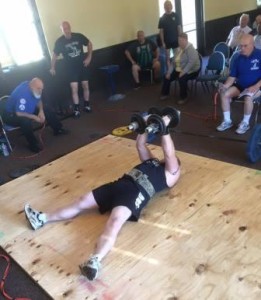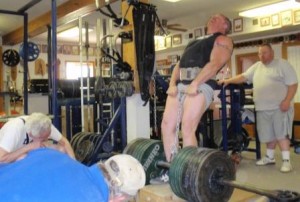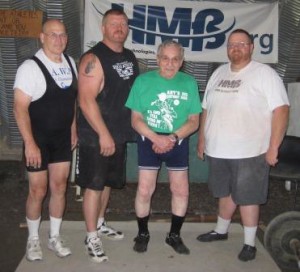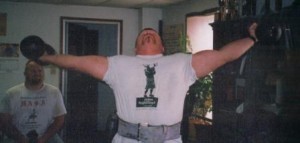Where did they go?
By Eric Todd
I began training at a rather young age. Running at around 3, bodyweight exercises a little later, and weight training/competitive wrestling at nine. While not always the most gifted athlete, I always felt I could overcome anything through effort. It is something that became a passion of mine. So when I began strongman/weight lifting competitions at about twenty six, I was instantly hooked. It was the same kind of feeling. Work harder than the other guy and you will prevail. Well, sometimes it worked and sometimes it did not. But it became a way of life, and one that would be difficult to completely walk away from.
That is why it often confused me when others would walk away. Many had talent much greater than mine, and a huge upside had they reached their potential, or somewhere in that neighborhood. After some studying and discussing it with peers, here is a few categories that I feel some of these fellas fit into.
The first guy is intimidated. He is the one that emails you about coming out to train. Since the door is always open, you welcome him with open arms. Often, this guy does not show up. Sometimes with an emailed excuse, sometimes not. Sometimes he shows up and lays it all out there. You have been around the block a time or two and recognize the potential. You remember what it was like your first day training with the group. You hope he comes back, because you recognize that someday, he may be able to push you to greater heights. But all he sees is how he struggled so with weights that we experienced folk used easily. So, he does not return. (Sometimes this occurs after he belly aches about getting his motorbike dusty on country roads, and borrows your Super Squats book. Ah, but I digress). Believe me, when I first got started, there were times I would eye the competition early and wonder to myself if anyone would notice if I just disappeared like a fart in the wind. But my pride would not allow it.
The next guy is emotionally weak (for lack of a better term). They cannot stand to compete if they do not win every time. I have met a few in my time, often much stronger than me. Once, I was competing at a strongman meet. I was in the lightweight pro division, but there was also a heavyweight amateur class. There was a character in the heavyweights who trained with 2 very high profile, world class strength athletes. And this guy was STOUT! He easily won his division, and put all the lightweight professionals to shame. At that time, I had competed against the best of the best in the Heavyweight class as well, and recognized what this guy had. I told him he should compete in a pro/am to win his professional card. I had no doubt he could do it. He told me he would not compete if he was 100% sure he could win. Glory! If I had thought that way, I would not have competed very often. Never saw or heard of that guy again.
The last guy is the fella that it just plain comes too easy for. I have seen guys come out and win right out of the blocks. Some even go so far as to win a nationals or win a pro card. You have scarcely heard their name before, and there they are beating seasoned veterans. Sometimes, I am not sure they even know who they are beating. Then they disappear into the night, not unlike Melvin at my first strongman meet. I could never understand that. However, in talking to some of my confederates, it just came too easy for them. Winning for me was a blast, and it drove me on. It was that rewarding due to what it cost. The hours training. The injuries. The broken skin and blood. The aching muscles, and the crawling up the stairs. The bitter, painful losses after all these dues were paid. The cost was high, but it made the reward even more sweet when it came. So, I guess if it came that easy for me, maybe I would, too, have said “so what” and walked away.
Anyway, since in all-round since the median age is 426, I know the vast majority of you have had your ups and downs in sport. And you still keep coming back. I cannot see myself walking away from competitive lifting either. And though I have to be more selective with what I go all out on there are still plenty of exercised that I am setting all time bests in these days. I always thought that if I had the skill level or genetics of some of these guys, I would have won everything and never walked away. But I guess I was given something else that took me a ways too. So, in conclusion, I guess not everyone is wired the same, and that is OK. I reckon it is those few blessed souls who are given the genetics along with tenacity and a work ethic who rise to the top. For the rest of us, I am glad I have been along for the ride.



